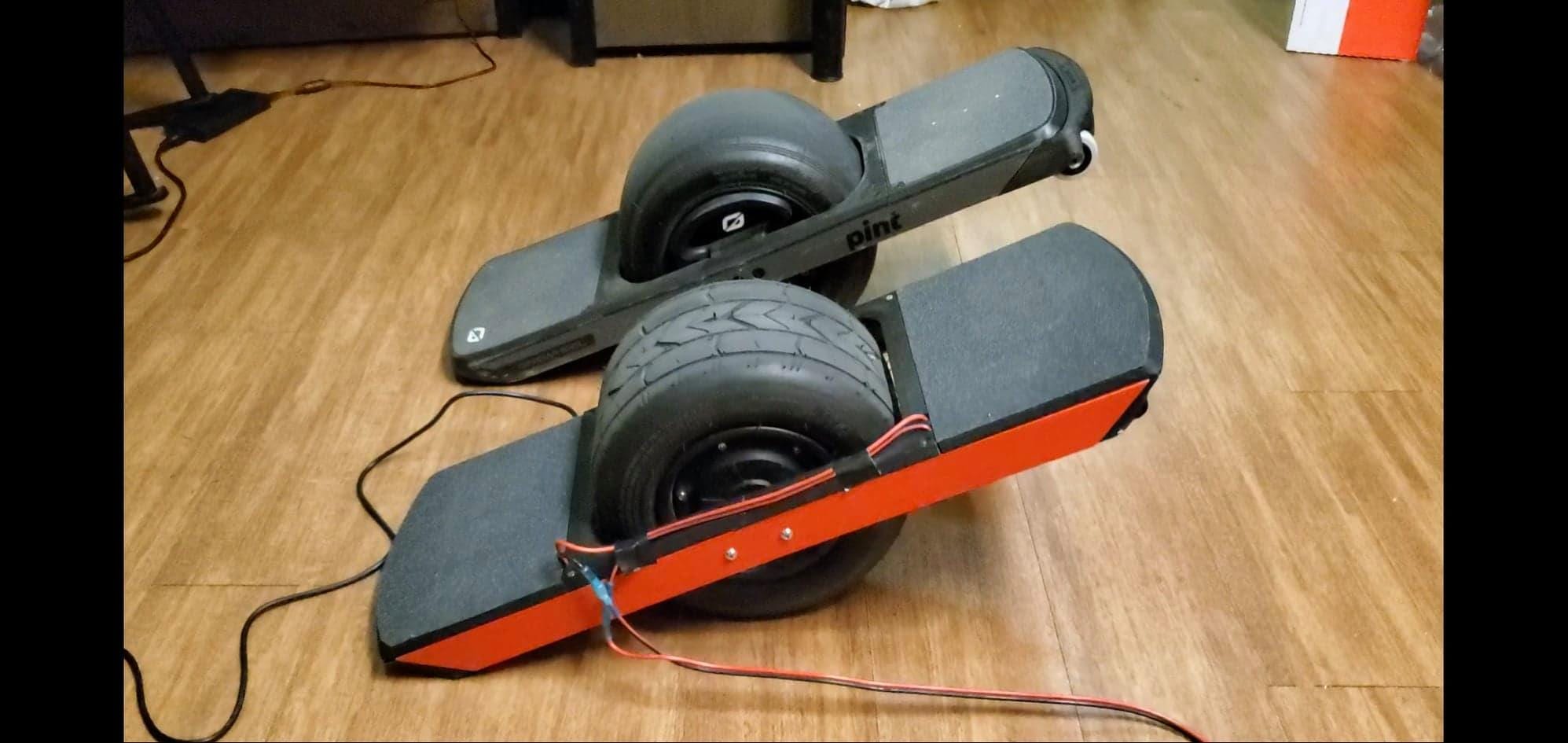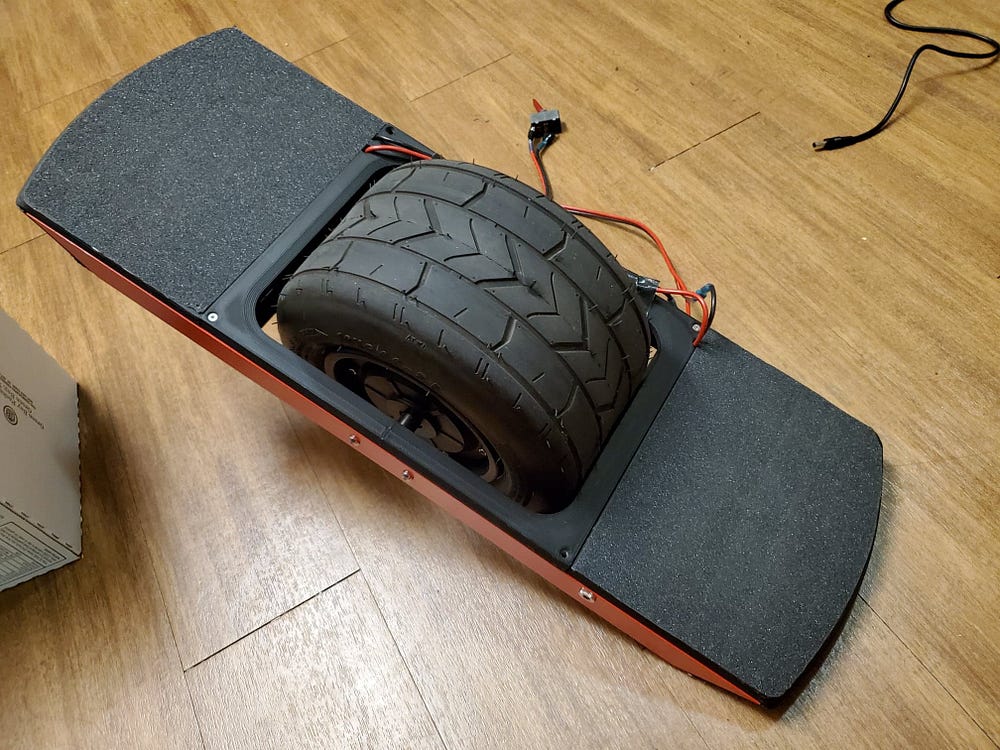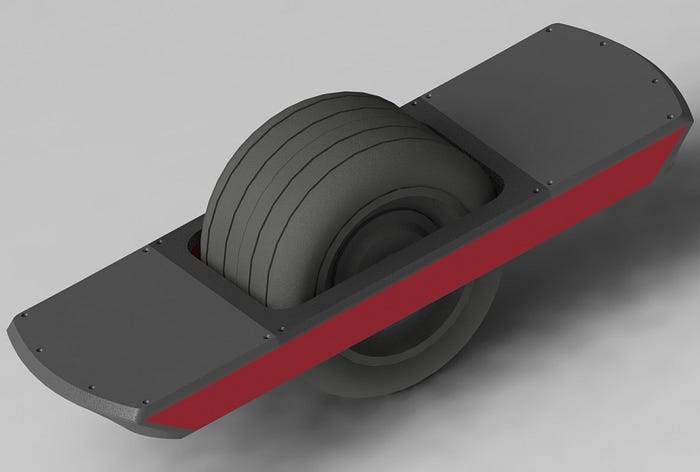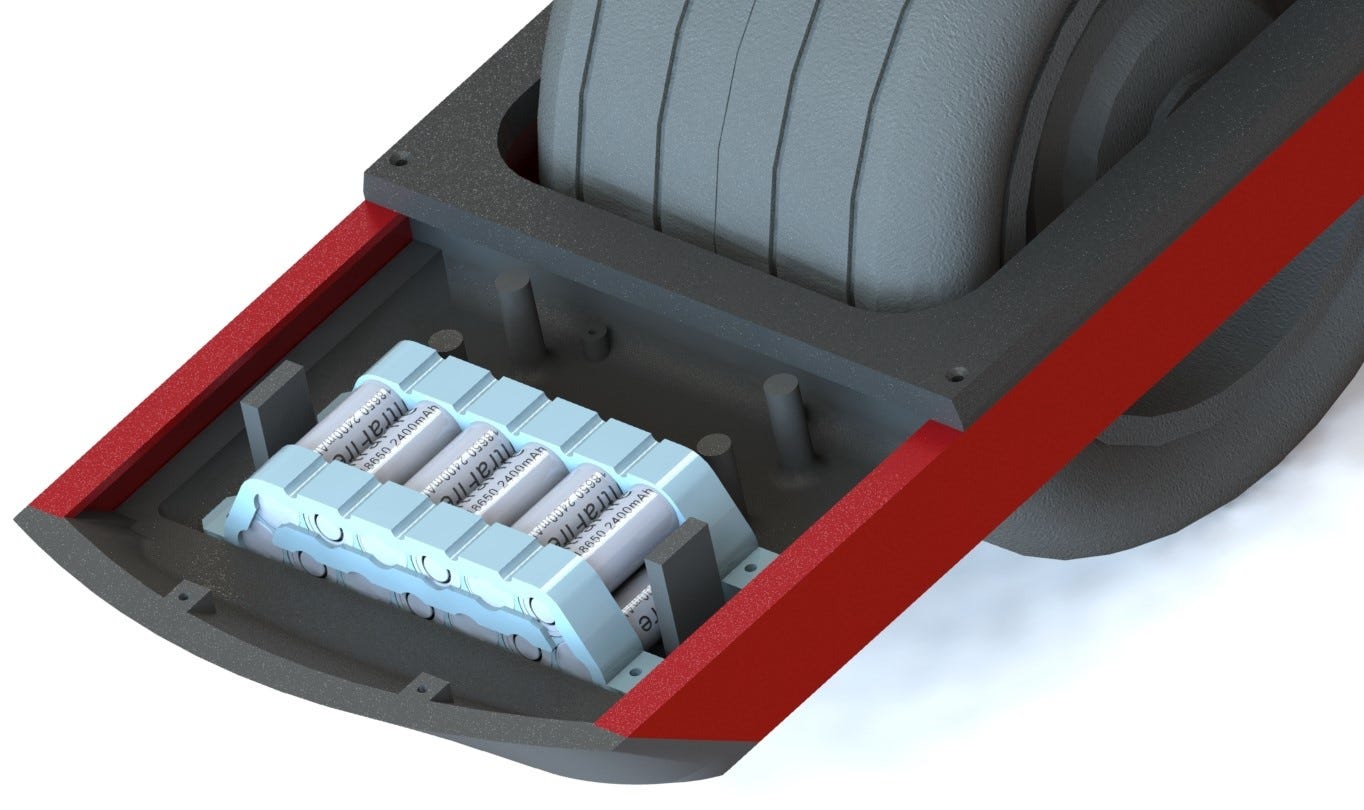Building my own OneWheel: Part 2



A while ago, I made a post about a DIY OneWheel I was working on. It worked reasonably well, but I wasn’t quite as polished as I would like it to be. Since then, I’ve redesigned the frame, using the OneWheel Pint as inspiration.
New Frame



The new frame uses aluminum channel for the side rails, and 3D-printed parts for the bumpers and footpads. Everything was printed using PLA at 70% infill, which may have been overkill. I was considering using polycarbonate for the parts which would be taking a lot of impact, but the PLA seems to be holding up fine.
New Battery Pack
In this new version, I decided to build my own battery pack just for the experience. I got some 18650 cells, and used them in a 13S1P configuration to get a 48V nominal pack. I hooked them up to this BMS, and mounted it under the rear footpad. The cells are held together by a 3D printed holder.
Results
Because this was a senior design project, I had to write the firmware myself. The self-balancing code is just a simple PID implementation. While it works and is rideable, it’s not nearly as robust as the actual OneWheel, and doesn’t include pushback. For anyone attempting this build, I’d suggest going with the balance app that’s now included in the VESC firmware. I haven’t tested it myself, but many other builders have had good results with it.
For those of you who want to attempt a project like this, I’d highly recommend checking out this forum thread, which is probably the best resource on the internet for building OneWheels at the moment. For my more details on the software and electronics of my build, check out my previous blog post. I have links to my ESP32 firmware, and the Android app I used to tune it.
Happy building :)
